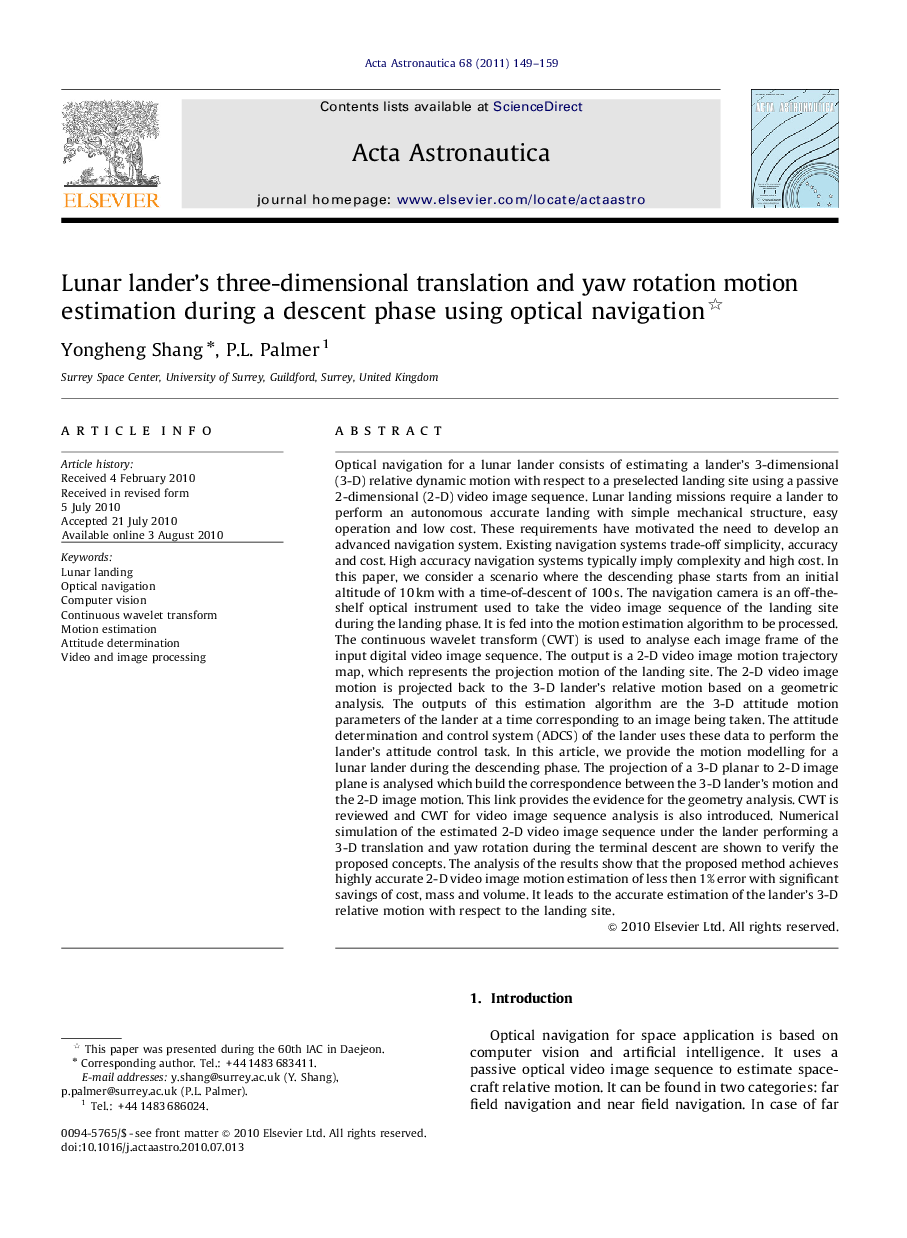| کد مقاله | کد نشریه | سال انتشار | مقاله انگلیسی | نسخه تمام متن |
|---|---|---|---|---|
| 1716207 | 1519990 | 2011 | 11 صفحه PDF | دانلود رایگان |

Optical navigation for a lunar lander consists of estimating a lander's 3-dimensional (3-D) relative dynamic motion with respect to a preselected landing site using a passive 2-dimensional (2-D) video image sequence. Lunar landing missions require a lander to perform an autonomous accurate landing with simple mechanical structure, easy operation and low cost. These requirements have motivated the need to develop an advanced navigation system. Existing navigation systems trade-off simplicity, accuracy and cost. High accuracy navigation systems typically imply complexity and high cost. In this paper, we consider a scenario where the descending phase starts from an initial altitude of 10 km with a time-of-descent of 100 s. The navigation camera is an off-the-shelf optical instrument used to take the video image sequence of the landing site during the landing phase. It is fed into the motion estimation algorithm to be processed. The continuous wavelet transform (CWT) is used to analyse each image frame of the input digital video image sequence. The output is a 2-D video image motion trajectory map, which represents the projection motion of the landing site. The 2-D video image motion is projected back to the 3-D lander's relative motion based on a geometric analysis. The outputs of this estimation algorithm are the 3-D attitude motion parameters of the lander at a time corresponding to an image being taken. The attitude determination and control system (ADCS) of the lander uses these data to perform the lander's attitude control task. In this article, we provide the motion modelling for a lunar lander during the descending phase. The projection of a 3-D planar to 2-D image plane is analysed which build the correspondence between the 3-D lander's motion and the 2-D image motion. This link provides the evidence for the geometry analysis. CWT is reviewed and CWT for video image sequence analysis is also introduced. Numerical simulation of the estimated 2-D video image sequence under the lander performing a 3-D translation and yaw rotation during the terminal descent are shown to verify the proposed concepts. The analysis of the results show that the proposed method achieves highly accurate 2-D video image motion estimation of less then 1% error with significant savings of cost, mass and volume. It leads to the accurate estimation of the lander's 3-D relative motion with respect to the landing site.
Journal: Acta Astronautica - Volume 68, Issues 1–2, January–February 2011, Pages 149–159